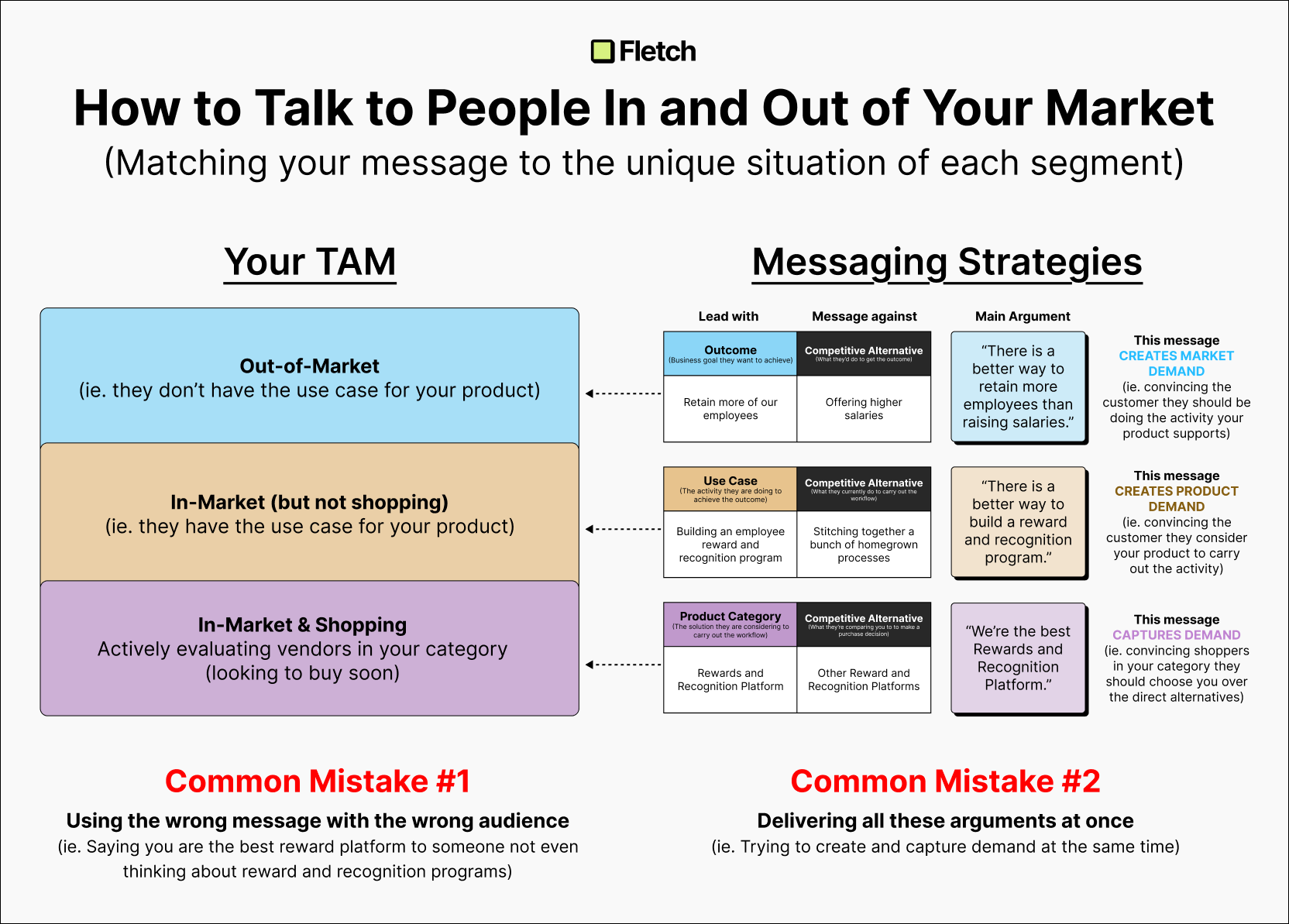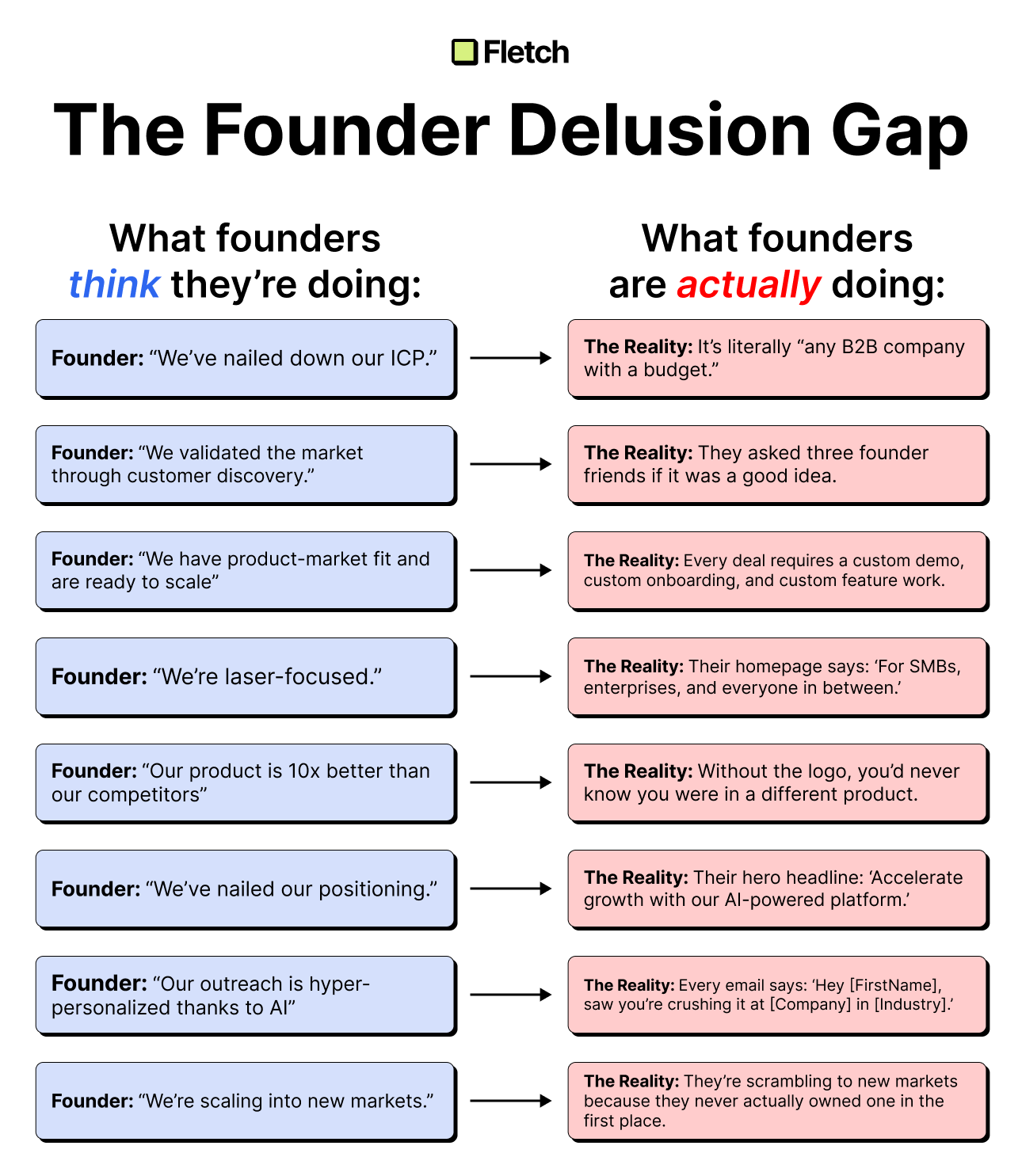Minimum Viable Positioning Archetype

How do early stage horizontal startups establish a footing in a market? 🦶
↳ especially when they are doing something very new? 🤔
👑 By owning a use case 👑
We call this positioning archetype “The Horizontal Point Solution” in our model.
And we see it often!
(We’ve worked with over 60 startups, and most of them are horizontal)
😱 But there is a common mistake we see these horizontal startup founders make…
Even when they know they fit this archetype.
❌ They try to own multiple use cases at once.
This might look good in a pitch deck to help them raise money off of a huge TAM…
✋ But it prevents them from actually making progress in their early go-to-market.
Why?
Because it’s hard enough to be great at addressing a single use case.
So when you try to position around multiple things and say “We handle all of these use cases”…
🙅♂️ Customer’s won’t believe you.
This is like a doctor out of medical school saying “I’m an expert in knee injuries, head injuries, and shoulder injuries”
No one in their right mind would go to this doctor for any of these things.
→ If you have a knee injury, you go to the knee specialist
→ If you have a head injury, you go to the head specialist
→ If you have a shoulder injury, you go to the shoulder specialist
⌛ And it takes time to establish this credibility as an expert.
____
Take Gusto for example.
When they started in 2011, they certainly had a vision to offer a complete suite of digital office solutions (payroll products, HR products, and benefit products).
1️⃣ But they had to own Payroll first.
⚓ This was their anchor into the market.
↳ and the minds of their customers.
And as they established trust crushing a single use case, they were able to broaden their product offerings to expand their TAM.

Ben Wilentz
Founder, Stealth Startup





